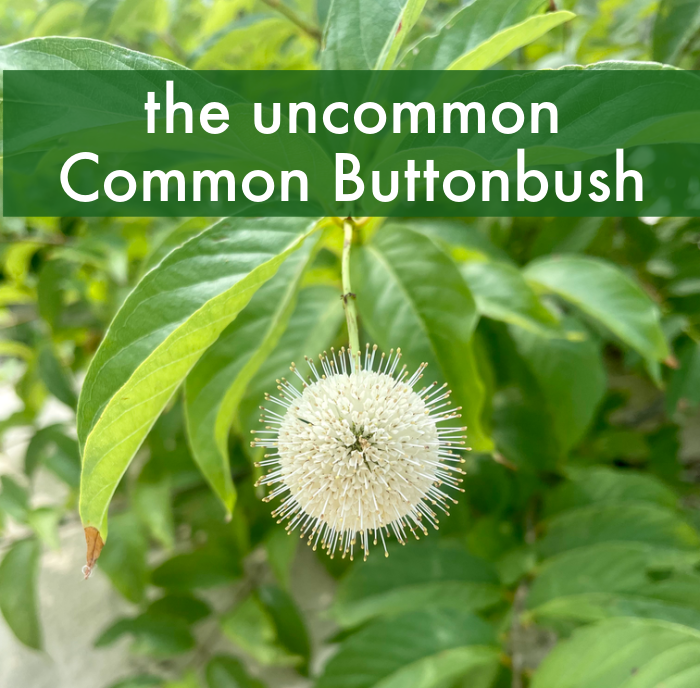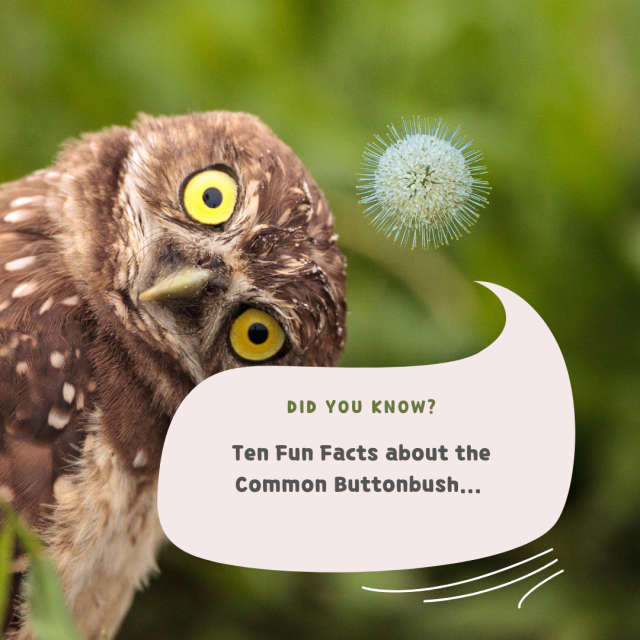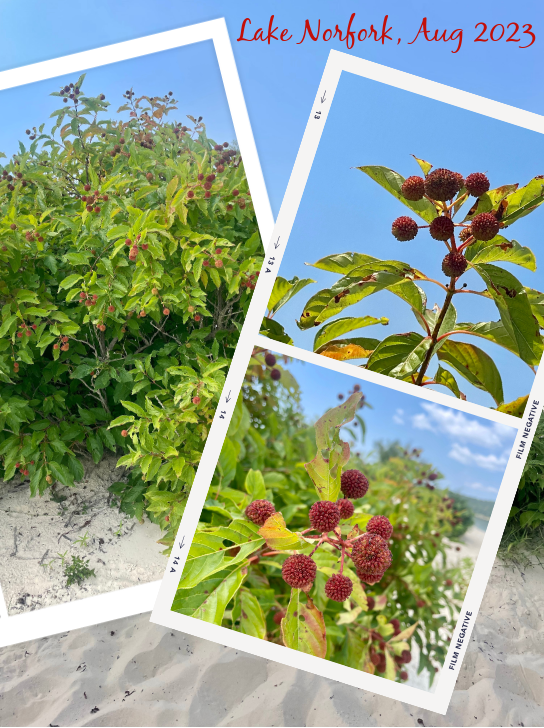I’ve been enamored with the Common Buttonbush (Cephalanthus occidentalis) since I first noticed it growing wild along the shoreline of Lake Norfork. Even when I knew nothing about this plant, it’s fragrant pom-pom flowers fascinated me. Seriously, I love any plant that looks Dr. Seuss-inspired.
Now that I understand its importance to wildlife, I’m one of its biggest cheerleaders.
One thing that makes the buttonbush unique is its love of water. This particular plant thrives in marshes, bogs, along shorelines and streams, and other low-lying wet areas. (This explains why it lines the shores of my favorite lake.) But even without wet conditions, the buttonbush will adapt in a variety of habitats within growing zones 5-9.
My neighbor planted one on the south side of her house next to our driveway. Even with partial sun and only weekly watering, it has flourished beneath this summer’s heat dome.
Ten Fun Facts about the Common Buttonbush:
- This native shrub’s spherical, pincushion-like flowers bloom creamy white and fragrant throughout early spring into late summer, making it a nectar favorite for bees and butterflies;
- Buttonbush is the host plant for the showy hydrangea sphinx and titan sphinx moths;
- This shrub provides shelter for frogs and salamanders and nesting habitat for some of our favorite songbirds;
- Nicknamed buttonwillow, honey balls, and honey bells, buttonbush is not riddled with pests or diseases;
- In autumn, buttonbush seed heads turn a glorious combination of scarlet, green, and gold, before eventually drying to russet;
- In winter, buttonbush seeds provide a healthy food source for migrating birds, wood ducks, shorebirds, and other waterfowl;
- The roots of the buttonbush prevent or stop erosion;
- This shrub will grow in up to 36 feet of water, making it a favorite for use in wetland conservation;
- Native Americans used buttonbush bark to treat a variety of digestive ailments, (but like many medicinal plants, parts of the plant may be poisonous so consume only under the guidance of a professional herbalist or physician); and,
- Both dried and fresh buttonbush stems enhance any floral arrangement.
Photos of Buttonbush in Late Summer
I took these photos about three weeks ago at Jordan Island (aka Sand Island) at Lake Norfork. As you can see, the seed heads are already showing their fall colors.
These bushes growing on Sand Island are very happy and content. (I feel the same way when I’m there…)
😎 😎 😎
What natural beauties!
Grace Grits and Gardening
Farm. Food. Garden. Life.












I’m going to call them Honey Balls. I like that name better. 😘
Thanks for informing us I will be on lookout for it on Greer ferry
I bet you’ll find them there!
Thanks for the info. The seed heads are beautiful.
I agree! Thanks, Carol.
Do you think they would grow in Colorado?
They will grow in zones 5-11. Colorado zones range from 3-7, so it depends on where you live in those zones AND how wet the conditions are. If you visit a garden center that specializes in native plants and buttonbushes aren’t sold there, probably not.
We are in west central NH and we have been living on our property for 26 years. We just found this beauty next to our pond that is fed by a bog. We are thrilled! It smells better than a gardenia💗Looking forward to this fall and using it for an arrangement.
How exciting! I bet it is super happy living by a pond.